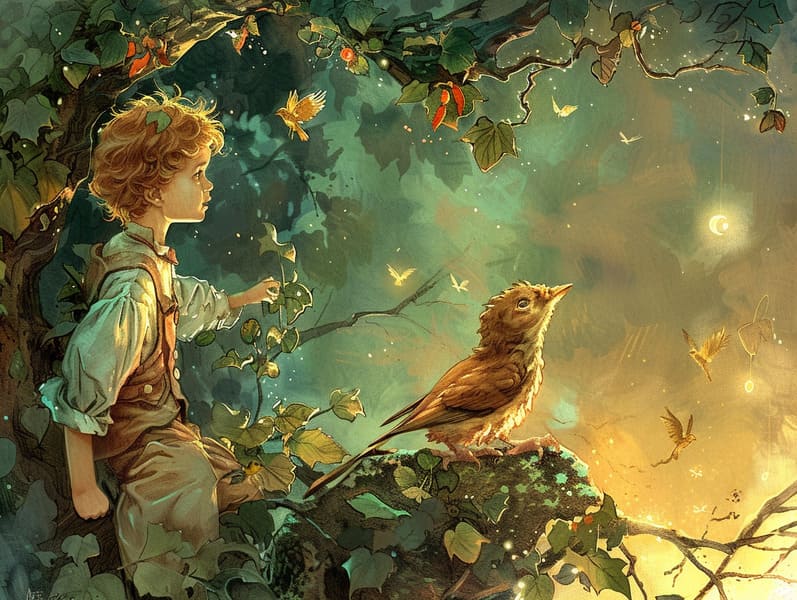The Origins of Legendary Fairy Tales and Its Timeless Spell.
The Origins of Legendary Fairy Tales and Its Timeless Spell.
Blog Article

Classic fairy tales have enduring presence. These stories have been narrated from one generation to the next far before they were ever inscribed. They originated from a variety of societies, including American traditions. They were initially narrated among mature audiences, often carrying themes and messages mirroring the societal norms and beliefs of the time.
The Brothers Grimm, Jacob and Wilhelm (the Grimm brothers), were among the first to gather and publish many of these beloved narratives. Their collection, "Grimm's Fairy Stories," included stories like "The Story of Cinderella," "The Story of Hansel and Gretel," and "Schneewittchen," which have since become mainstays in the world of beloved fairy tales. Similarly, the Danish author's fantastical fairy tales, such as "The Little Mermaid," and "The Duckling's Story," have floated into hearts worldwide, solidifying their place in the pantheon of classic fairy tales.
Despite their historical roots, traditional fairy tales remain as relevant as ever, especially as bedtime stories for kids. These delightful tales are now available in various formats, including vibrantly illustrated books, fantastical animations, and internet fairy tales.
Their persistent charm can be credited to several enchanting factors:
Vital Lessons: Classic fairy tales often teach important moral lessons. Narratives like "The Boy Who Cried Wolf" teach the significance of honesty, while "The Story of the Tortoise and the Hare" show the virtues of steadfastness and unassuming nature. These narratives offer children clear distinctions between correct and incorrect, shaping their moral compass in a soft yet significant way.
Kindness and Comprehension: Ancient fairy tales frequently involve individuals facing obstacles and hardships, urging kids to resonate with their struggles and cheer for their triumphs. For instance, "Beauty and the Beast" shows us the necessity of seeing beyond looks to perceive the true character of a person, encouraging warmth and appreciation.
Cultural Knowledge: Many ancient fairy tales are rich in the cultural contexts from which they arose. Immersing in these stories can provide intriguing perspectives into different backgrounds, fostering a sense of global awareness and respect.
Inventiveness and Fantasy: The whimsical elements in traditional fairy tales—spells and potions—provoke children’s fantasies. These narratives guide readers to fantasy realms, enlivening innovative dreams and a sense of astonishment that persists a lifetime.
Ancient fairy tales are not only fantastical but also teaching. They function as delightful tools in strengthening various mental and emotional abilities in little ones. When old fairy tales are narrated, they improve language skills by showing new language items and complicated sentence structures. This practice also nurtures hearing abilities and attentiveness, as young readers keep up with the story, ready to see what happens next.
Furthermore, conversing about the themes and characters of traditional fairy tales can cultivate evaluative skills and logical thinking. Little ones are shown to detect patterns, anticipate outcomes, and understand cause and effect. These discussions also aid young readers articulate their thoughts and feelings, strengthening their emotional intelligence.
In today’s online age, the existence of digital fairy tales has made these narratives more obtainable than ever. Web-based platforms and programs give ample collections of timeless fairy tales that can be read or played anytime, anywhere. Fairy tales told out loud are particularly well-liked, extending an captivating way for children to be a part of these magical stories. Spoken stories and read-out-loud stories take characters and settings to life, often enhanced by mesmerizing harmonies and background music that augment the storytelling experience.
The timeless fascination of traditional fairy tales lies in their ability to evolve to the present while preserving their main lessons. Contemporary modernizations of these stories often bring in more inclusive figures and modern settings, making them relevant to today’s audience. However, the essential messages of boldness, humanity, and fair-mindedness remain unchanged, continuing to move kids of all ages.
Classic fairy tales also offer a sense of security and knowability. They put out a organized narrative with a recognizable beginning, middle, and end, often winding up with the wrap-up of conflicts and the triumph of right over wrong. This reliability can be relieving for children, showcasing a sense of security in an constantly changing world.
Classic fairy tales continue to enthrall and inform new generations, maintaining their appeal and relevance in modern society. As children's night stories, they distribute a this site perfect blend of wonder and wisdom, nourishing moral values, empathy, and creativity. The prevalence of web-based fairy tales and the popularity of fairy tales told out loud warrant that these ancient fairy tales remain reachable to new generations.
By maintaining and passing on these narratives, we continue to celebrate the rich tapestry of tradition and cultural heritage. Whether you are delving into a vividly illustrated book, experiencing a digital library, or listening on an read-aloud book, the mystique of ancient fairy tales is always within reach. These tales show us of the unfading ability of narratives and its ability to connect us across eras and regions.
Regardless if you are enjoying a vibrantly illustrated book, browsing a internet library, or listening on an read-aloud story, the attraction of traditional fairy tales is always within reach.
These stories emphasize of the invariable effect of stories and its ability to unite us across generations and cultures, forming a connection that captivates and teaches alike.